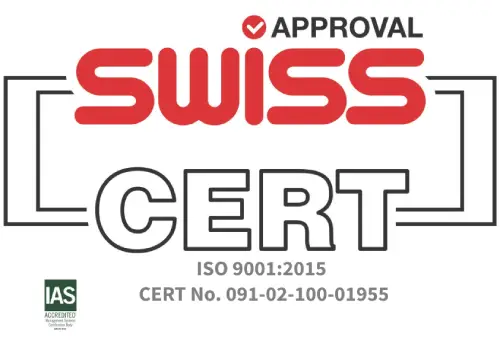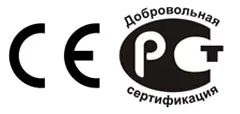2025

Why Polygomma Waterproofing Membrane for Roof Terrace Is More Than Just a Protective Layer
Imagine spending a relaxing evening on your rooftop terrace, only to find water stains creeping into the ceiling below after the first monsoon or snowfall. This isn’t just inconvenient—it’s a costly problem waiting to grow. Roof terraces, while beautiful and functional, are constantly exposed to weather extremes and urban pollutants, making them especially vulnerable to water infiltration.
A waterproofing membrane for roof terrace isn’t just a protective layer—it’s a long-term investment in the durability of your home or commercial space. But with so many options in the market, how do you choose one that not only performs but also stands the test of time?
In this blog, we’ll break down what makes a high-performing waterproofing membrane, highlight the features that really matter—like UV and ozone resistance, ease of installation, and eco-friendliness—and guide you on how to select the best solution for your roof terrace.
Why Roof Terraces Need Special Waterproofing Attention
Unlike other parts of a building, terraces face a unique set of challenges. From direct sunlight and temperature fluctuations to heavy rainfall and debris build-up, the structural strain is significant. Here are the major threats roof terraces face due to constant exposure:
- UV Degradation: Intense sunlight can break down regular waterproofing layers.
- Ponding Water: Flat terraces often suffer from water pooling, leading to seepage.
- Thermal Expansion: Daily changes in temperature cause the substrate to expand and contract, stressing the membrane.
- Urban Pollution: Air pollutants, including ozone and acid rain, can erode lesser-quality materials over time.
Hence, a durable waterproofing membrane for roof terrace must be engineered to combat all of the above without losing its structural integrity.
What Makes a Waterproofing Membrane Truly Reliable?
Not all waterproofing solutions are built the same. When assessing your options, here’s what to look for:
1. UV, Ozone, and Air Pollution Resistance
The first line of defense for your building against the weather is the roof. Globally, EPDM membranes are utilized on millions of square meters of rooftops and are renowned for their remarkable resistance to:
- UV rays that would otherwise break down traditional bitumen or asphalt layers.
- Ozone exposure, which accelerates material degradation.
- Airborne pollutants, especially in urban areas, that lead to chemical reactions and wear.
This level of resilience ensures the membrane lasts for decades without needing frequent replacements.
2. Wide Temperature Tolerance
A premium waterproofing membrane for roof terrace should function flawlessly across a broad range of temperatures. EPDM membranes, for example, are engineered to perform from -40°C to +160°C, making them ideal for both freezing winters and scorching summers.
This is particularly valuable in regions with dramatic temperature swings—be it the deserts of Rajasthan, snowy rooftops in the UK, or hot summer terraces in Florida.
3. Flame-Free, Heat-Free Installation
Modern waterproofing systems eliminate the need for dangerous torches or gas-based installations. With EPDM membranes:
- Installation is completely flame-free and safe.
- No specialised equipment or heat guns are required.
- This makes them perfect for both new constructions and retrofits, where fire risk is a concern.
It also reduces labour time and minimises disruption during renovations or construction projects.
Sustainable & Practical: Waterproofing with the Environment in Mind
These days, more homeowners and builders are looking for solutions that do more than just protect—they need to contribute to environmental well-being. That’s where EPDM waterproofing membranes truly stand out.
EPDM (ethylene propylene diene monomer) membranes are not only highly durable but also extremely eco-conscious. Here’s how:
- Recyclable & Low-Impact: EPDM membranes are made from synthetic rubber that can be recycled, reducing waste at the end of their long lifespan. This makes them an excellent fit for environmentally responsible construction.
- Supports Green Roofs: Thanks to their anti-root penetration properties, these membranes are ideal for supporting rooftop gardens, lawns, or landscape terraces. They act as a reliable root barrier while still ensuring complete waterproofing.
- Flame-Free Installation: Many EPDM systems do not require torches or open flames for installation. This flame-free method significantly reduces pollution during construction and improves overall safety on-site.
- Lightweight Advantage: Weighing only around 1.25kg per square metre, EPDM membranes reduce the structural load on buildings—especially important for retrofits or older buildings.
- Energy Efficiency Booster: With excellent thermal resistance properties, EPDM membranes contribute to the insulation of your roof terrace, reducing heat gain and helping indoor environments stay cooler in summer and warmer in winter.
- UV and Ozone Resistance: Prolonged exposure to UV rays and ozone doesn’t degrade the material easily. This enhances lifespan without the need for harmful chemical coatings or frequent maintenance.
As green building practices become the gold standard, using a waterproofing membrane for roof terrace projects that aligns with sustainability goals is no longer optional—it’s essential. Whether you’re planning a green rooftop retreat or simply want to reduce your home’s carbon footprint, EPDM offers a future-proof solution.
Reliable Long-Term Performance
A significant number of commercial and residential rooftops across the world have been successfully protected with EPDM membranes. Their reputation isn’t just about marketing—real-world results speak volumes. Here’s why EPDM is trusted globally for long-lasting protection:
- Millions of square metres installed globally, across various climates and geographies.
- Proven service life of 30+ years, reducing the need for regular reapplications or costly repairs.
- Fire-resistant grades available for high-risk zones and buildings with strict fire codes.
These aren’t just features—they’re tested and trusted performance indicators.
Summary
- Defend Against the Elements: Superior protection against UV rays, ozone, air pollution, and extreme temperature variations (from -40°C to +160°C).
- Safe & Hassle-Free Installation: No need for torches or gas—completely flame-free and heat-free, reducing risk and installation time.
- Proven Long-Term Durability: With a global track record spanning millions of square metres, EPDM membranes offer a service life of over 30 years.
- Eco-Friendly Solution: Lightweight (around 1.25kg/sqm), recyclable, and free from toxic additives—ideal for green building certifications.
- Perfect for Green Roofs: Acts as an anti-root barrier, making it ideal for landscaped terraces, rooftop gardens, and urban farms.
- Fire-Resistant Grades Available: Enhanced safety for buildings that require higher fire protection standards.
Before you begin your next terrace project, remember: the right waterproofing solution doesn’t just protect surfaces—it protects your investment, your environment, and your peace of mind.

